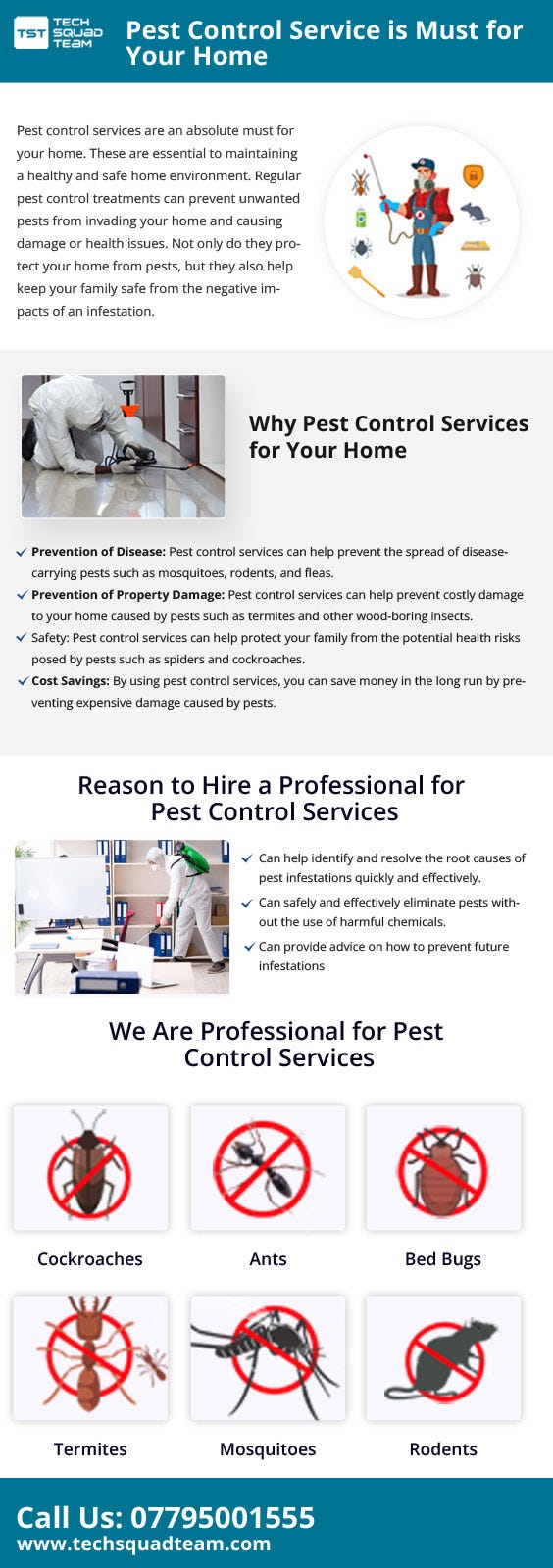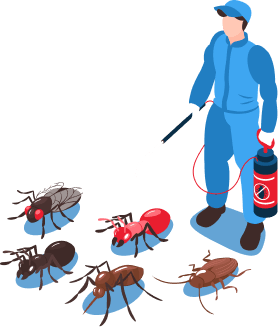Pest Control Visalia: Reliable Solutions for Your Pest Problems
Pest Control Visalia: Reliable Solutions for Your Pest Problems
Blog Article
Sorts Of Bug Control: Which Technique Is Right for Your Infestation?
When encountered with a pest invasion, the choice of an appropriate technique for insect control is essential in efficiently handling the scenario. By checking out the different kinds of parasite control techniques readily available, people can make educated choices tailored to their special circumstances, guaranteeing a much more lasting and efficient end result in bug elimination.

Chemical Insect Control
Chemical bug control involves making use of artificial or naturally obtained chemicals to take care of and eliminate pest populaces successfully. This method is typically utilized in farming, forestry, and property setups to battle a wide variety of insects, consisting of rats, pests, and weeds. Making use of chemical pesticides can offer quick and targeted services to pest problems, making it a preferred option for many people and businesses.
One of the crucial advantages of chemical pest control is its capacity to swiftly remove pests, minimizing the danger of damages to crops, property, and human health - pest control visalia. By utilizing specific chemicals that target particular bugs, this approach can efficiently control invasions while minimizing injury to valuable organisms and the atmosphere when applied correctly
Nonetheless, the usage of chemical insect control likewise elevates issues regarding possible negative results on non-target types, water resources, and human health. It is important to adhere to safety and security standards, use chemicals properly, and take into consideration different bug control methods to minimize these risks and ensure sustainable pest management techniques.
Biological Insect Control
Organic pest control, also recognized as biocontrol, uses living organisms to lower and handle pest populations naturally. By using the insect's all-natural predators or microorganisms, biological parasite control provides a ecologically friendly and sustainable option to pest management.
One typical example of organic parasite control is using ladybugs to control aphid populations in gardens. Ladybugs are natural predators of aphids and can aid keep their numbers in check without using damaging chemicals. Likewise, the bacterium Bacillus thuringiensis (Bt) is made use of as an organic insecticide to control caterpillar pests while being secure for other organisms.
Mechanical Insect Control
Utilizing physical and hand-operated techniques to take care of parasite populaces, mechanical insect control supplies an alternate strategy that does not depend on the use of living microorganisms or artificial chemicals. This approach involves the usage of barriers, catches, or other tools to physically deter or remove pests. By blocking bug entrance points or establishing catches to capture them, mechanical pest control can efficiently decrease infestations without introducing chemicals into the atmosphere.
One usual example of mechanical parasite control is making use of mesh displays on doors and home windows to stop pests from entering structures. pest control visalia. This straightforward yet reliable approach serves as a physical obstacle, maintaining pests out while allowing for correct ventilation. Furthermore, devices like mousetraps, fly swatters, and ultrasonic repellents fall under the mechanical parasite control category

Physical Insect Control
A reliable strategy to handling parasite populations without relying upon chemical or biological methods entails using physical parasite control techniques. Physical insect control methods aim to remove or deter parasites with mechanical methods as opposed to pesticides or chemicals. These techniques are frequently liked for their environmentally friendly nature and marginal impact on non-target organisms.
Some usual physical parasite control techniques include making use of barriers such as webs or screens to avoid pest entry, catches to catch and get rid of insects, and hand-picking to literally get rid of bugs from plants or structures. In addition, methods like heat treatments can be used to manage parasites like bed pests by elevating the temperature to levels that are dangerous to the bugs.
Physical bug control is especially valuable in incorporated insect monitoring (IPM) techniques, where several parasite control techniques are integrated for efficient bug administration while decreasing the use of chemicals. By using physical parasite control methods, individuals can properly deal with pest invasions with marginal environmental influence.
Integrated Parasite Management
When applying physical bug control methods as component of pest administration approaches, Integrated Bug Management (IPM) becomes a comprehensive approach that leverages different techniques to efficiently regulate pest populaces. IPM focuses on lasting avoidance of pests through a combination of biological, cultural, physical, and chemical devices tailored to details parasite concerns. By incorporating multiple control tactics, IPM aims to lessen the risks related to parasites while additionally minimizing dependence on chemical options.

Verdict
To conclude, identifying one of the most efficient approach of insect control for your invasion relies news on numerous aspects such as the sort of parasite, the level of the infestation, and ecological factors to consider. Chemical insect control includes making use of chemicals, biological insect control makes use of all-natural predators, mechanical bug control entails physical obstacles, physical bug control consists of trapping or eliminating bugs, and integrated bug administration integrates numerous techniques for an alternative strategy to pest control. Pick the approach that finest matches your particular circumstance.
By making use of the bug's all-natural predators or pathogens, biological insect control provides a eco friendly and lasting solution to pest management.
Making use of hands-on and physical approaches to manage bug populaces, mechanical pest control uses an alternate strategy that does not depend on click to read more the usage of living organisms or synthetic chemicals.An efficient approach to managing insect populations without relying on chemical or organic methods involves the use of physical pest control methods.When implementing physical pest control approaches as part of pest management strategies, Integrated Parasite Management (IPM) emerges as a comprehensive method that leverages different strategies to successfully regulate pest populations. Chemical bug control entails the use of chemicals, biological parasite control utilizes natural predators, mechanical parasite control involves physical barriers, physical parasite control includes trapping or getting rid of bugs, and integrated insect monitoring integrates multiple methods for an all natural technique to pest control.
Report this page